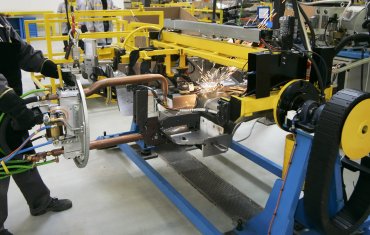
U.S. demand for industrial lubricants is expected to remain stagnant through 2021, with process oils and metalworking fluids the only parts of the segment predicted to grow, according to Kline & Co.
The industrial segment is the largest portion of U.S. lubricant demand, accounting for between 1.2 billion gallons and 1.3 billion gallons, or 45 percent, of the market. Kline forecasts it to grow at a modest 0.1 percent compounded annual rate over the next four years, Project Manager Sushmita Dutta said in a webinar earlier this month.
A key restraint for the segment is the growing use of synthetic lubes. Synthetic lubricants are made from synthetic base oils that are longer lasting compared to mineral oil type base oil. Thus, increased usage of synthetics is causing a decrease in the frequency of oil change, explained Dutta.
The auto industry is doing little to boost industrial lube consumption, since vehicle production rose just 0.8 percent in 2016. Near flat growth has resulted in a slowdown in the lubricant demand growth in the metalworking industry, such as automotive production industry, Dutta said in an interview.
Many industries are reshoring, bringing manufacturing back to the U.S. for various political and financial reasons. This process is giving industrial lubricant demand a boost and is expected to continue as tariffs and other expenses for overseas manufacturing hubs increase.
Kline forecasts that demand for grease, general industrial oil and industrial engine oils will decrease over the next four years.
Process oil is the leading product type consumed, with 40 percent to 50 percent of the [industrial lubricants] market, noted Dutta. Though the industrial lubes market is served by a multitude of suppliers, it is led by process oil suppliers, and Kline expects this will not change.
Photo: iStock
